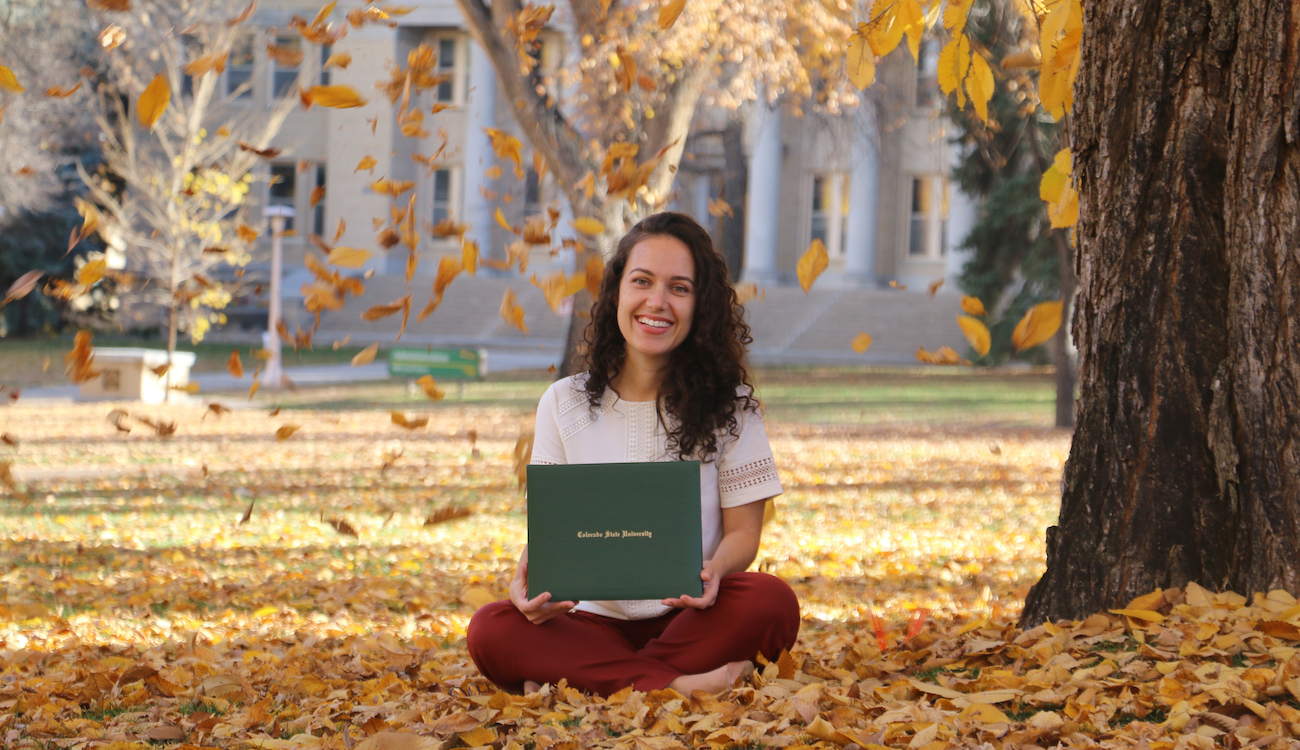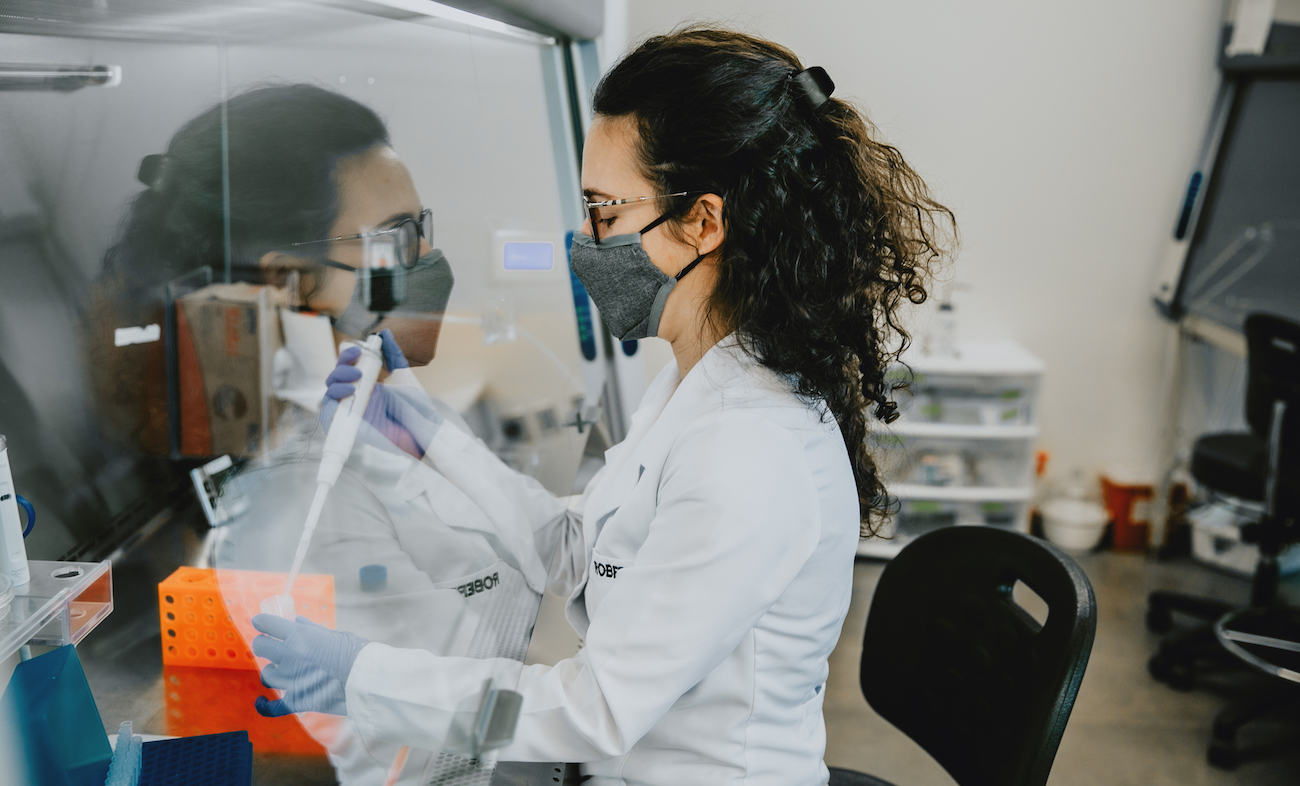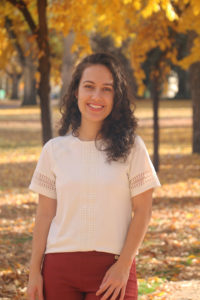
When Roberta Maia Sabino graduated from college in her home country of Brazil and was looking for places to pursue graduate work abroad in chemical and biological engineering, she came across Colorado State University Professor Matt Kipper’s webpage.
Maia Sabino didn’t even know where Colorado was.
“I had to look it up on a map,” she says with a laugh.
Now, Maia Sabino is much more familiar with the state — and CSU. This month, she will be the first student to walk across the commencement stage and accept a doctorate from the School of Advanced Materials Discovery, an interdisciplinary unit created about four years ago within the Graduate School.
An admissions whirlwind
Maia Sabino emailed Kipper in May 2017, just before the deadline to apply to the fledgling SAMD for the fall, and in a few short months she had been accepted, gotten her visa and arrived in time for the second day of classes. Her faculty advisor, Professor Ketul Popat of the Department of Mechanical Engineering, quickly saw the promise in Maia Sabino and suggested that she switch from earning a master’s degree to pursuing a doctorate.
Her specialty is biomaterials. In one research project, she has worked on titanium implants used for procedures like hip and knee replacements, changing the topography of their surface at the nano scale to make them more like real bones, so it’s less likely that body tissue will reject them as foreign substances. The research also involves chemistry: adding a polymer coating that’s similar to what’s already found in the body. Maia Sabino has performed similar research on a coating that helps prevent blood clotting.

Maia Sabino working in the lab. Photo by Claire Knight
She already has 17 published journal articles, six as the first author, and she says the work involves different labs and materials like nanofilms and hydrogels, making it multidisciplinary by nature.
“That’s a lot of what I’ve learned from Professor Popat, how to collaborate,” Maia Sabino says. “You can do way more amazing things by collaborating.”
‘Destined to do great things’
“Roberta has been instrumental in progressing the research on blood biomaterial interaction in my lab,” Popat said. “Specifically, her contribution on how surface chemistry and topography influences blood and its components on material surfaces has been exceptional. She will truly be missed in my lab, but I know she is destined to do great things in research in the future.”
 In addition to her published work, Maia Sabino has presented at national and international conferences, co-founded the Scott Bioengineering Safety Team, was the SAMD’s first graduate student council representative and participated in the Princeton Pathways into the Academy program, which prepares promising scholar-researchers who are considering academic careers.
In addition to her published work, Maia Sabino has presented at national and international conferences, co-founded the Scott Bioengineering Safety Team, was the SAMD’s first graduate student council representative and participated in the Princeton Pathways into the Academy program, which prepares promising scholar-researchers who are considering academic careers.
She’s already been accepted into a two-year postdoctoral program at the Massachusetts Institute of Technology, and she hopes that afterwards, she can come back to CSU for her teaching and research career.
“I felt very welcomed here, like I was part of CSU and Fort Collins,” Maia Sabino says. “I’m sad to leave because I love this place. I feel very lucky to have been in the SAMD and at CSU. Even though I’m from Brazil, I feel like this is home.”
About the school
The SAMD, which was granted department status about a year ago, is supported with Research Core Facilities funding from the Office of the Vice President for Research. The school has about 30 students working with faculty from eight collaborating departments in three different colleges. It is based on the fourth floor of the Anatomy/Zoology Building and led by Director Travis Bailey, a professor of chemical and biological engineering, and Associate Director Chris Weinberger, an associate professor of mechanical engineering.
The growing field of materials science engineering focuses on the use, properties, functions and characterization of materials to address complex issues of efficiency, sustainability, cost and equity. Material scientists combine physics, chemistry, math, engineering, merchandising and many other fields to create novel materials.